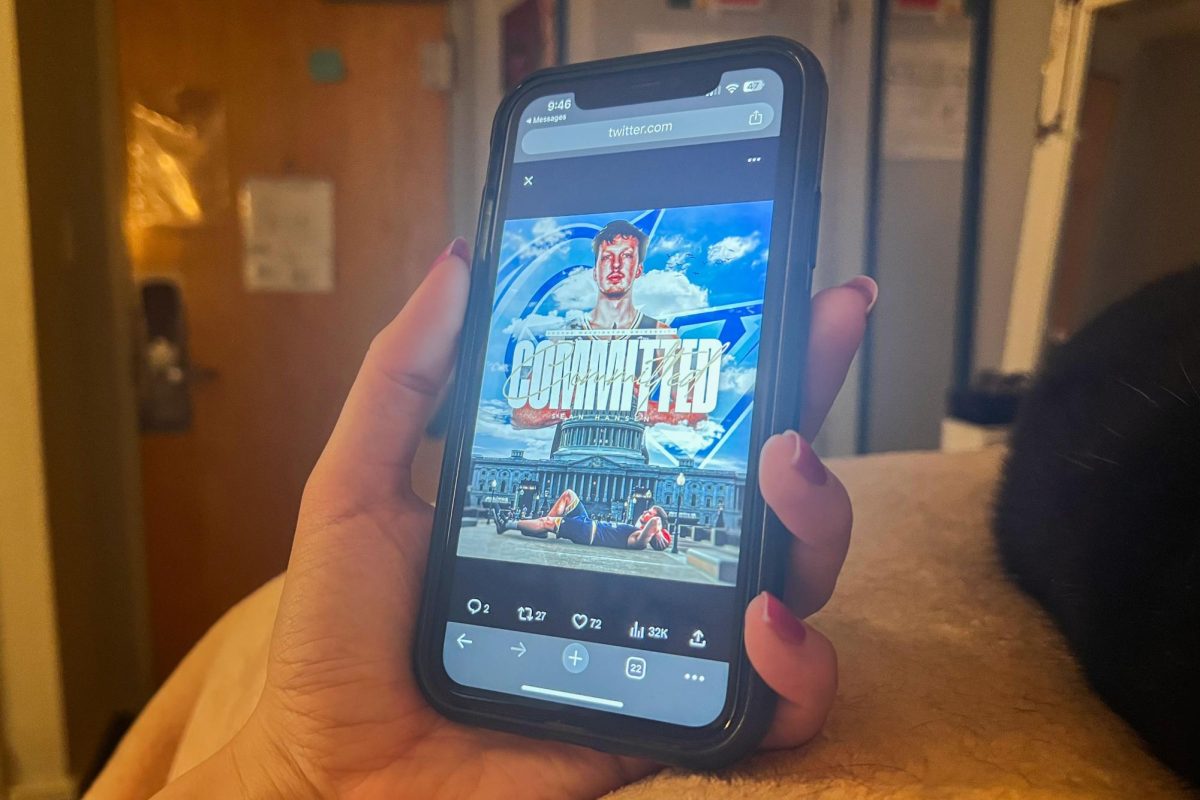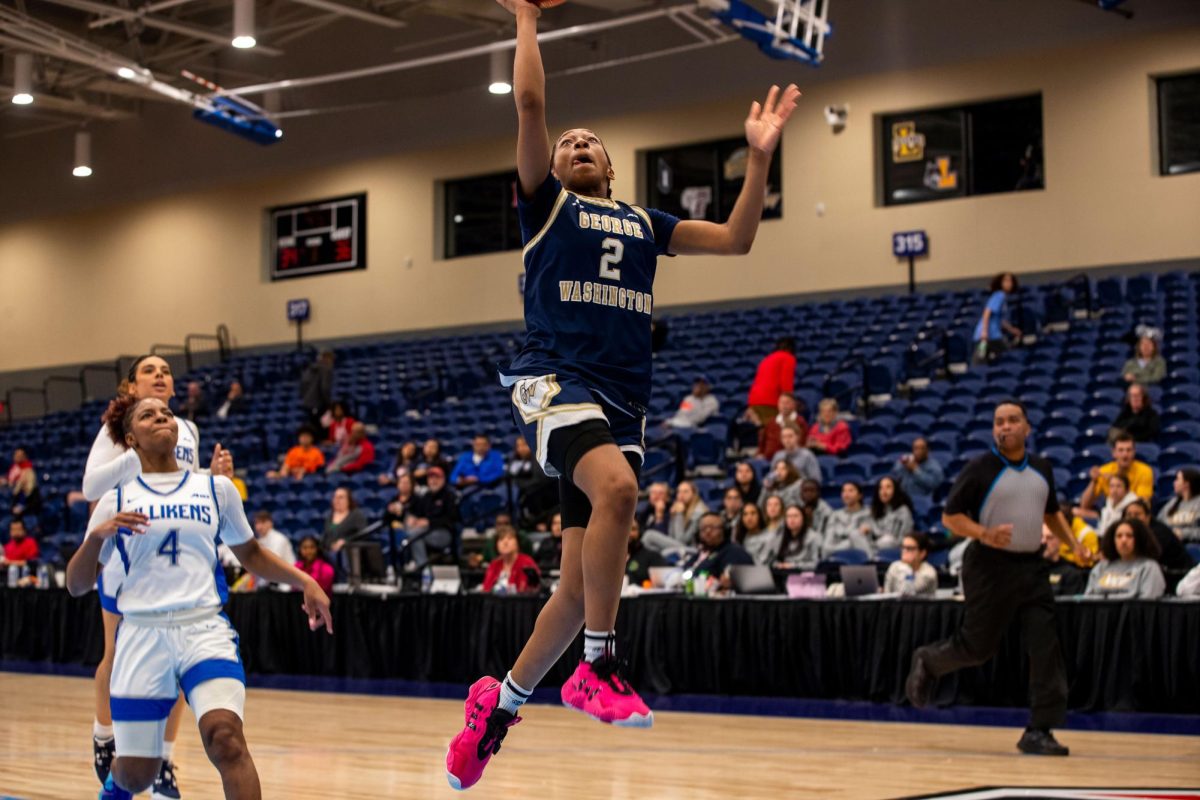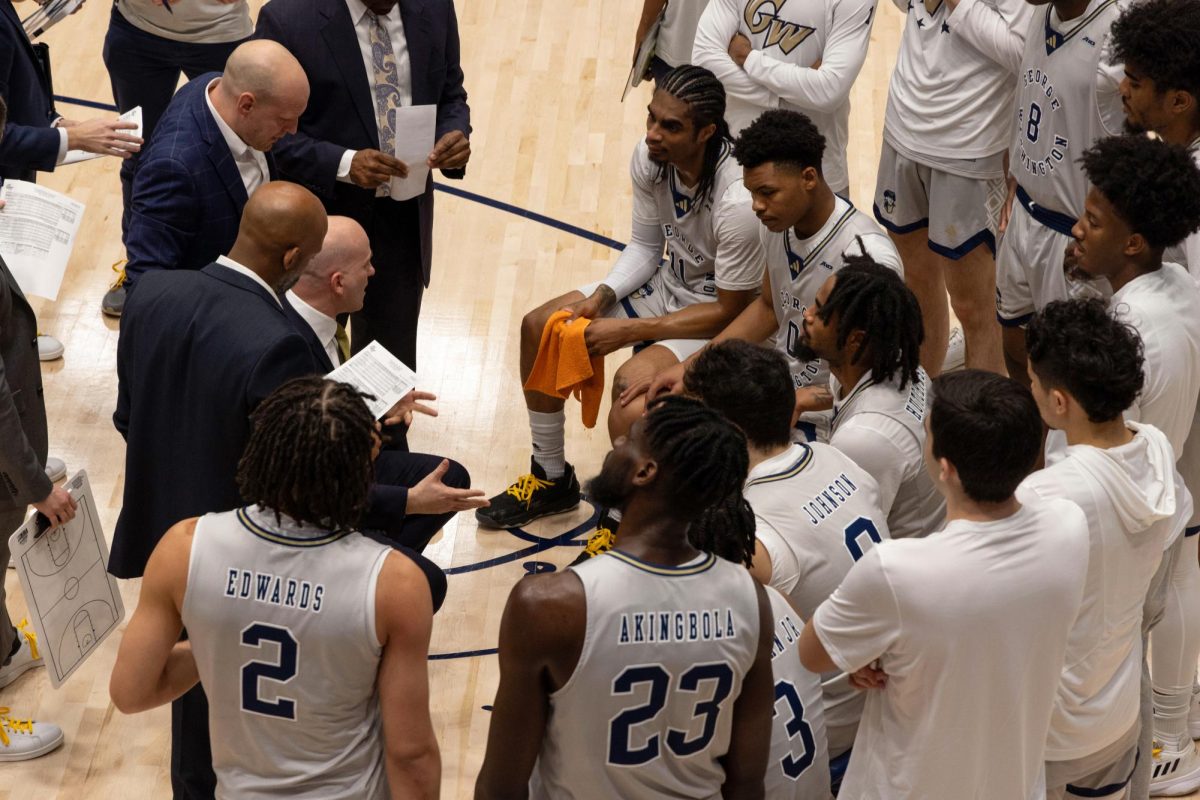Walk-ons are a different breed of athlete. For the GW men’s soccer team’s walk-ons, a love of the game ties them together.
Goalkeeper Andreas Kolazas says soccer is an integral part of who he is.
“I’ve been playing my whole life,” Kolazas said. “Why would I want to stop now?”
For Zak Adams, a fullback who walked on the team last year, playing soccer for a collegiate team is a realized dream.
“This is a fantastic opportunity for me,” Adams said. “All I needed was that one chance and I knew I could make good on it.”
For Kolazas, Adams and Alfonso Herrera, Yame Nkgowe, Jon Lagasse and Eric Schneider – the four other non-scholarship players who made the team through a tryout – attempting to and making the team has been a fantastic experience.
“This has been a truly wonderful experience and I feel extremely fortunate to have made the team,” Kolazas said.
GW men’s soccer head coach George Lidster only sees these potential players once – at a walk-on tryout – if they are already enrolled as a student at GW. The tryout lasts approximately an hour and a half. In that short amount of time, Lidster tries to make a fair assessment of what a potential walk-on could contribute to his team.
“I look for good technique, along with a balanced combination of athleticism and skill,” Lidster said. “I also take into account that all the players are basically playing with a bunch of guys they’ve never seen before, which may affect their performance.”
Kolazas said an hour and a half really doesn’t show the entire spectrum of a player’s character.
“Obviously I’m going to have a positive view on my walk-on experience,” Kolazas said. “I made the team. It’s just unfortunate that the trials are the length they are because some guys might just be having a bad day and didn’t get the opportunity to show their true skills.”
Kolazas attempted to walk on to the team his freshman year but failed to make the roster. He tried again the next year, and made it, but never really felt comfortable.
“The transition from last year to this one has been fantastic,” Kolazas said. “Everything’s going a lot smoother, and I’m more comfortable with both myself and my position on the team.”
The comfort level for Kolazas may have contributed to him getting more playing time in the Colonials’ net. For many walk-ons, injuries combined with the position one plays are key factors in how much they are on the field. An extra goalkeeper is always a valuable commodity, so Kolazas may have had a better chance of making the team than someone who plays another position.
Many walk-ons have to wait for starting players to be injured for a chance to play.
“I’ve played in the last five games, and started the last three, because a lot of our guys got hurt,” said Adams, a sophomore forward. Junior midfielder Jon Lagasse also has benefited from others’ injuries.
“It’s unfortunate that some of our key guys had to get hurt, but I’m glad I’ve been able to contribute in their place,” Lagasse said.
Midfielder Eric Schneider, who walked on the team last year, has seen the injuries from both sides. Because he was hurt, Schneider was unable to play his freshman year but decided to try out again his sophomore year. However, a clerical error with his paperwork kept Schneider from playing in actual games and allowed him to only practice. This year, he’s on the team and getting more playing time because other player are injured.
The walk-on players agreed they felt comfortable once they made the team and received just as fair a chance as any of the players on scholarship.
“There is no discrimination at all between our walk-ons and our other players,” Lidster said. “All players are given a chance to develop to the point that their skill level allows them to.”
Lidster cited as an example Andrew Morrison, who walked on to the team 12 years ago and eventually became the captain.
“Playing time is something that is earned, not something that is taken for granted, regardless of whether you’re a walk-on or not,” Lagasse said. “Striving for excellence has made me a better player, tenfold.”
Walk-ons must have an extra level of dedication. They don’t have the economic incentives to play that some of the recruited and scholarship players have, and they have to go through more scrutiny just to make the team.
“I believe that all the walk-on players here have some intangible qualities that can’t be measured, like hustle, hard work and determination,” Kolazas said.
Lidster said he always attempts to eliminate the popular misconception that walk-on players are less skilled than those on scholarships.
“No one that plays once or twice a week is going to try out and automatically make the team,” Lidster said. “Soccer is just like any other sport in that there is a vast difference in skill level between those who play it intramurally and those on the team.”






